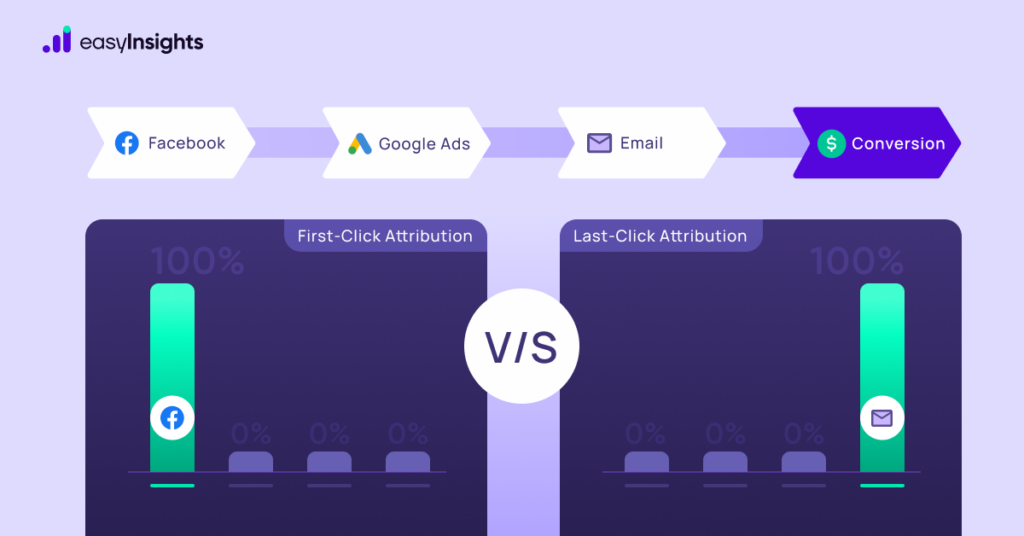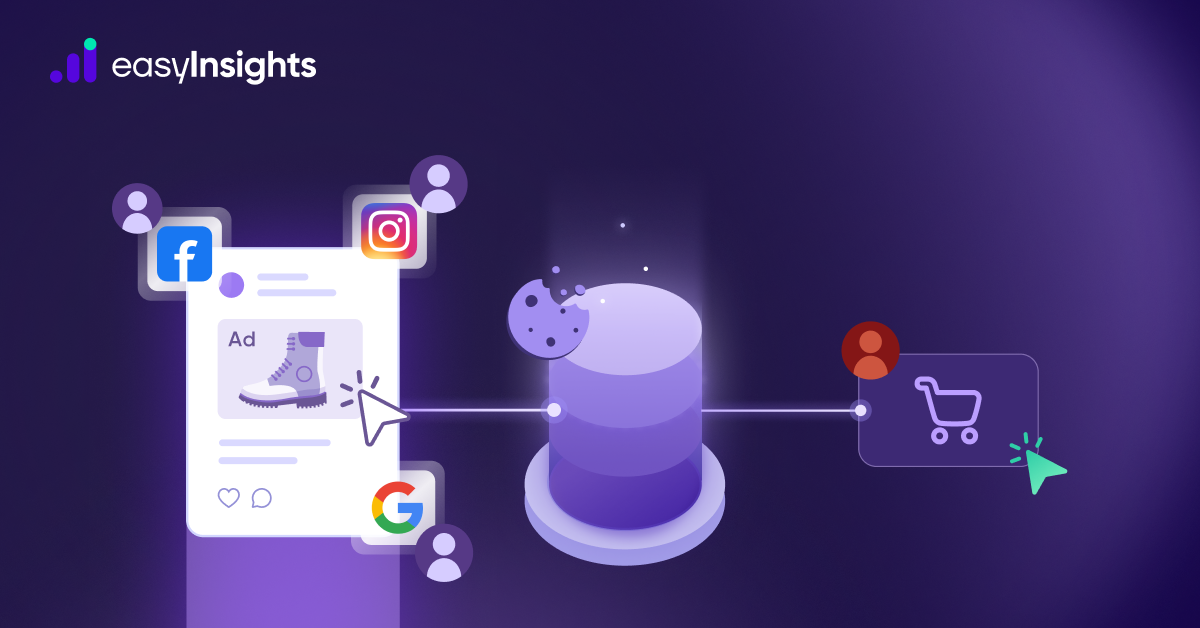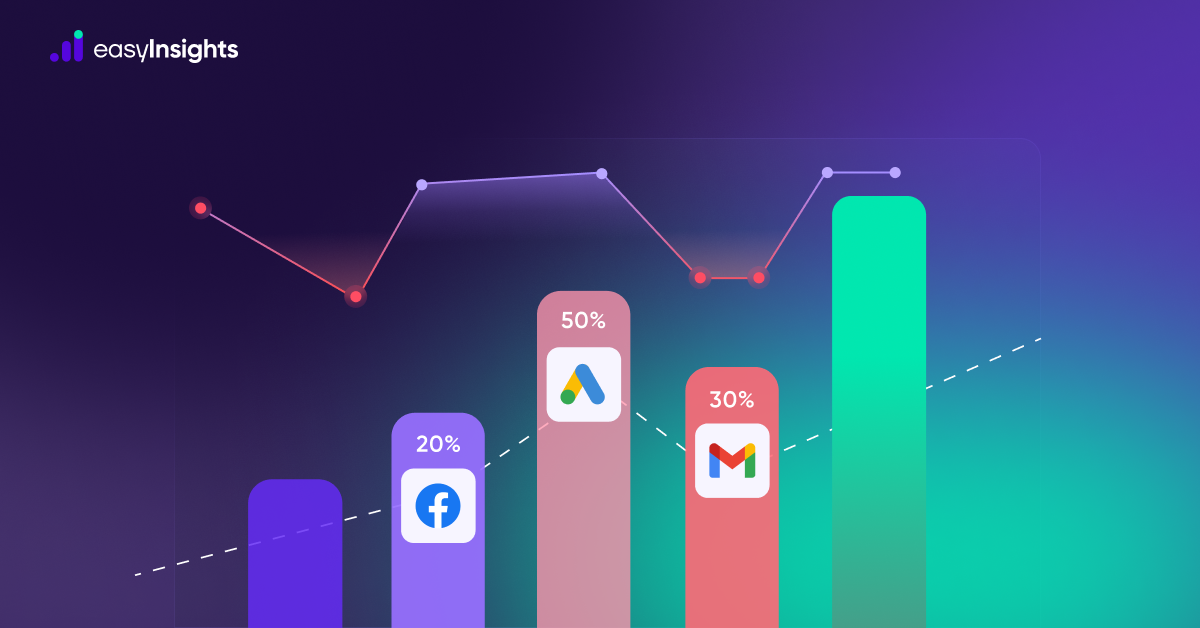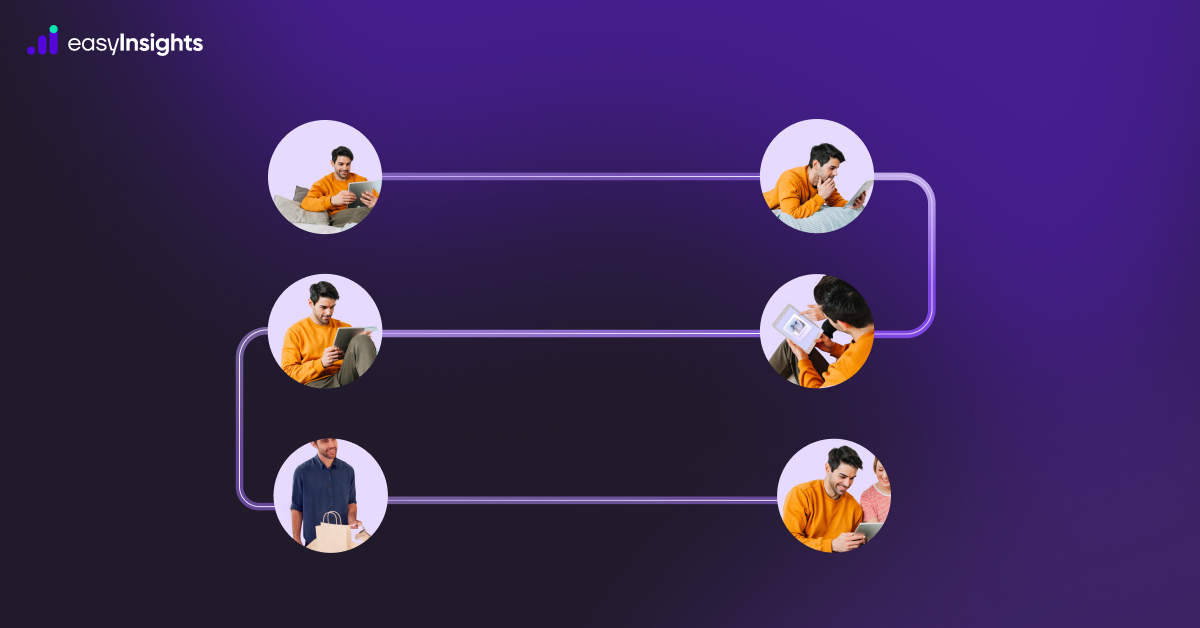
Attribution is a critical aspect of digital marketing, enabling businesses to determine which marketing channels and touchpoints contribute most effectively to conversions. Among the various attribution models, first-click and last-click attribution are two of the simplest ones. This blog explores the differences between first-click and last-click attribution, their advantages and disadvantages, and offers guidance on choosing the right model for your marketing strategy.
Jump ahead to:
Why Attribution Models Matter
Marketing Attribution refers to the process of identifying and assigning credit to the various marketing touchpoints that contribute to a conversion. This understanding is crucial as it helps marketers optimize their campaigns, allocate budgets more effectively, and enhance overall marketing performance. Here are several key reasons why attribution models are essential:
- Marketing Budget Allocation: Attribution models help in allocating marketing budgets more effectively by identifying high-performing channels.
- Optimized Campaign Performance: They provide insights into the effectiveness of different marketing strategies, allowing marketers to refine their approaches and maximize results.
- Customer Insights: These models offer a deeper understanding of customer behavior and preferences, helping to tailor marketing efforts more precisely.
- ROI Measurement: They assist in measuring the return on investment for various marketing activities, ensuring that resources are spent wisely.
What are First-Click Attribution Models ?
First-click attribution attributes full credit for a conversion to the initial interaction between your brand and a consumer. For example, if a consumer first discovers your company on Facebook, Facebook is credited for all subsequent sales, regardless of any later interactions such as clicking on a search ad or visiting the website directly.
Pros of First-Click Attribution
The First-Click Attribution Model provides several benefits for marketers by focusing on the first touchpoint that initiates the customer journey. Here are some key benefits:
- Highlighting Awareness Channels: Emphasizing the first interaction allows you to pinpoint the most effective channels for generating initial interest and awareness. For instance, if Facebook ads prove to be the primary driver of initial interest, allocating more budget to this channel can enhance reach and engagement significantly.
- Ease of Implementation and Understanding: The First-Click Attribution Model is straightforward, making it accessible for marketers to adopt without the need for intricate data analysis.
- Supporting Long-Term Strategies: This model underscores the importance of activities at the top of the funnel, promoting investment in channels that foster long-term brand recognition. By gauging the effectiveness of initial touchpoints, marketers can devise strategies that prioritize sustained engagement.
- Suitability for Small Businesses: Its simplicity and clarity make the First-Click Attribution Model particularly advantageous for small businesses with limited resources, helping them identify channels that drive initial interest effectively.
Cons of First-Click Attribution
While the First-Click Attribution Model has its advantages, it also comes with several drawbacks. Here are some key disadvantages:
- Overlooking Subsequent Interactions: By attributing all credit to the first interaction, this model ignores the role of subsequent touchpoints that nurture and convert leads. This can create an incomplete understanding of the customer journey.
- Potential for Misleading Insights: Relying solely on this model may lead to an overemphasis on initial interactions, potentially undervaluing channels that play crucial roles later in the customer journey. This can result in misallocated marketing budgets, focusing excessively on channels driving initial clicks while neglecting those that assist in conversion.
- Challenges with Budget Allocation: There is a risk of disproportionately investing in awareness channels at the expense of those that significantly contribute to closing sales. This misalignment in resource allocation can diminish the overall effectiveness of marketing efforts.
Best Practices for Using the First-Click Attribution Model
To maximize the effectiveness of the First-Click Attribution Model, consider the following best practices:
- Combine with Other Models: For a more well-rounded understanding, use the First-Click model alongside other models such as Last-Click or Multi-Touch Attribution to gain comprehensive insights into the customer journey.
- Analyze Full Conversion Paths: It’s crucial to extend your analysis beyond the initial interaction and thoroughly examine the entire conversion path. This approach helps in comprehending the contribution of each touchpoint throughout the customer journey.
- Use for Awareness Campaigns: The First-Click Attribution Model proves especially advantageous for campaigns designed to boost brand awareness and attract new leads.
- Continuous Monitoring and Adjustment: Regularly review and adjust your attribution strategy based on performance data and evolving marketing objectives.
When to Use the First-Click Attribution Models ?
The First-Click Attribution Model is particularly useful in the following scenarios:
- Brand Awareness Campaigns: The first-click attribution model emphasizes the initial touchpoint a customer has with your brand, providing valuable insights into brand awareness efforts. By attributing conversions to this initial exposure, it reveals which campaigns effectively generate early customer interest and introduce your brand.
- Long Sales Cycles: In industries with prolonged decision-making processes, such as real estate or B2B software purchases that can span weeks or months, first-click attribution offers significant insights. Here, the initial touchpoint serves as a critical foundation for the customer journey, establishing the groundwork for subsequent interactions and eventual conversions.
- Knowledge Base: If your marketing strategy relies heavily on informative content such as blogs, eBooks, or online seminars aimed at educating your audience, first-click attribution can be highly advantageous. For informative content, the first click signifies a potential customer actively seeking information, indicating a strong interest in learning more.
Additional Read: First Click Attribution Model : How to Optimize Brand Awareness
What are Last-Click Attribution Models ?
Last-click attribution, as the name implies, assigns credit for a conversion to the customer’s final interaction before making a purchase. In this model, the entire credit for the conversion is given to the last touchpoint the customer engages with before making a purchase or completing a desired action. This approach means that, irrespective of the number of interactions along the customer journey, the last touchpoint before the conversion is deemed the most significant and receives 100% of the credit. This model is widely available on most platforms, including Facebook, where it is used as the default attribution methodology.
Pros of Last-Click Attribution
The Last-Click Attribution Model provides several benefits for marketers by focusing on the last touchpoint before the conversion. Here are some key benefits:
- Focus on Conversions: Last-click attribution highlights the channels and campaigns that are most effective in driving final conversions.
- Commonly Used: It is widely adopted in the industry and is often the default setting in many analytics platforms.
- Immediate Impact: By focusing on the final touchpoint, businesses can quickly identify which channels are directly driving sales or leads.
Cons of Last-Click Attribution
Despite its advantages, the Last-Click Attribution Model also has several drawbacks. Here are some key disadvantages:
- Ignores Initial and Middle Interactions: This model overlooks the touchpoints that initially attracted and nurtured the customer, providing an incomplete view of the customer journey.
- Short-Term Focus: It may lead to an overemphasis on channels that close deals while neglecting those that build awareness and nurture leads.
- Budget Misallocation: There’s a risk of over-investing in channels that are effective at closing sales but under-investing in channels that drive initial interest and engagement.
Best Practices for Using the Last-Click Attribution Model
To maximize the effectiveness of the Last-Click Attribution Model, consider the following best practices:
- Combine with Other Models: For a more balanced understanding, use the Last-Click model alongside other models such as First-Click or Multi-Touch Attribution.
- Analyze the Entire Customer Journey: Look beyond the final interaction and consider the entire conversion path to understand the contribution of each touchpoint.
- Focus on High-Conversion Channels: Use this model to identify and invest in channels that are particularly effective at driving final conversions.
- Regularly Review and Adjust: Continuously monitor and adjust your attribution strategy based on performance data and changing marketing objectives.
When to Use the Last-Click Attribution Models ?
The Last-Click Attribution Model is particularly useful in the following scenarios:
- Conversion-Focused Campaigns: If your primary goal is to drive immediate conversions, last-click attribution can help you identify the most effective channels for closing deals and driving sales.
- Short Sales Cycles: For products or services with short sales cycles, last-click attribution provides insights into the final touchpoints that drive quick conversions.
- Performance Marketing: When focusing on performance marketing strategies, last-click attribution helps determine which campaigns and channels are most effective in driving immediate results.
Additional Reading: Understanding the Last-Click Attribution Model: Pros, Cons, and Best Practices
Combining First-Click and Last-Click Attribution Models
While first-click and last-click attribution each have their advantages, they also have significant limitations when used in isolation. Combining insights from both models can provide a more comprehensive view of the customer journey. Here are some ways to integrate both models:
- Multi-Touch Attribution: Implement a multi-touch attribution model that assigns credit to multiple touchpoints throughout the customer journey. This approach provides a balanced view of how different interactions contribute to conversions.
- Custom Attribution Models: Create custom attribution models tailored to your business needs. For example, you might assign more weight to the first and last touchpoints while still considering intermediate interactions.
- Analyze Different Stages: Use first-click attribution to analyze the effectiveness of awareness campaigns and last-click attribution to assess the performance of conversion-focused campaigns. This combined approach can inform a more holistic marketing strategy.
Conclusion
Choosing between first-click and last-click attribution models depends on your marketing goals, the nature of your customer journey, and the diversity of your marketing mix. First-click attribution is ideal for identifying entry points and focusing on brand awareness, while last-click attribution is better for understanding which interactions drive final conversions. However, for a more comprehensive view, consider multi-touch attribution models that provide insights across the entire customer journey.
To enhance attribution modeling and gain insights into marketing performance, consider EasyInsights. It facilitates tracking, analyzing, and optimizing campaigns across various attribution models like first-click, last-click, and multi-touch. EasyInsights enables custom attribution models tailored to your needs, with advanced analytics for understanding touchpoint impacts. It integrates data from sources like Google Analytics, Facebook, and CRM systems, providing a holistic view of marketing efforts through an intuitive interface. Amidst the need for a more comprehensive attribution model and the evolving digital landscape, future-proofing your marketing strategy is essential, especially with the phasing out of third-party cookies. EasyInsights offers a reliable solution for attribution challenges by leveraging server-side tracking to gather first-party data. This approach enables seamless navigation of digital complexities and unlocks valuable insights for growth.








